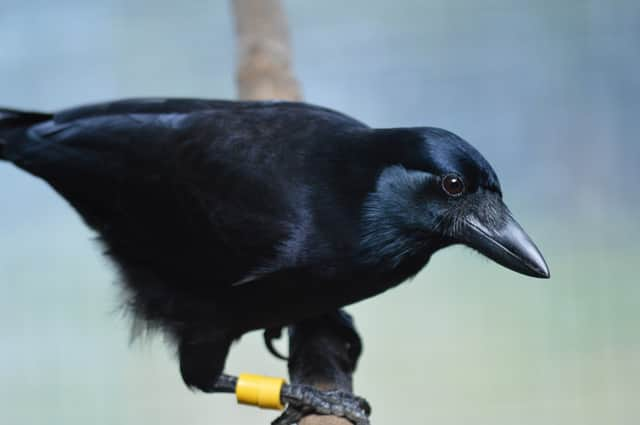Crows vs jays: which bird has more self-control when waiting for their favourite food?


Crows have self-control and will hold out for their favourite food regardless of whether a rival bird is present. Jays, on the other hand, will settle for a less preferred food option when another bird is there rather than wait for their favourite and risk losing out, according to research by Anglia Ruskin and Cambridge universities.
Both species are capable of displaying self-control through delayed gratification, by holding out for something better.
Advertisement
Hide AdAdvertisement
Hide AdCo-lead author Rachael Miller, senior lecturer in biology at Anglia Ruskin University, said jays tend to be less sociable than crows and rely more on hiding food for later use for survival and this may be why jays appear to change their tactics and choose their less preferred, but immediately available, food option when another bird is present.
The researchers examined the behaviour of six New Caledonian crows and five Eurasian jays when presented with two food choices on a rotating tray – a high-quality and low-quality option.
For jays, the high-quality food was mealworm and the low-quality food was bread, while the favourite for crows was meat and the less preferred option was apple.
The birds had to remove the food from under clear plastic cups. Each bird was tested separately, and they watched as both food types were added to the rotating tray.
Advertisement
Hide AdAdvertisement
Hide AdAt the same time, a second bird – either a direct competitor or a non-competitor bird – remained in an adjacent compartment. Just before the less preferred food option became available on the rotating tray, the door between the compartments was opened, allowing the second bird access. The bird being tested could then choose either the immediate option or wait 15 seconds for the delayed, preferred food to become available.
The study found each jay selected the high-quality, delayed reward (mealworm) while alone, but typically chose the immediate food choice (bread) when either a competitor or non-competitor bird was present. In contrast, each crow stood its ground and waited for the high-quality, delayed reward (meat) over the immediate, less preferred option (apple) in all three test conditions.
Dr Miller said: “Delayed gratification, in this case declining an immediate, small food reward and waiting for something better, demonstrates the ability for self-control.
“We have also used this rotating tray task to comparably measure self-control in young children. Both the Eurasian jay and the New Caledonian crow are capable of delaying gratification for a better reward, and we expected both species would wait for the higher-quality, preferred reward when alone and potentially with a non-competitor bird present, but would choose the lower-quality, immediate reward when a competitor was present, as waiting could risk them losing out.
Advertisement
Hide AdAdvertisement
Hide Ad“Interestingly, we found that ays were highly flexible in their use of delayed gratification, and this was entirely influenced by the presence of other birds, but the crows consistently chose the better, delayed reward, regardless of rival birds being present.
“These findings add to our understanding of self-control and the factors influencing delayed gratification in animals, which may relate to a particular species’ social tolerance and levels of competition.
“New Caledonian crows tend to be more sociable and tolerant of others than Eurasian Jays, and while both hide food for later use, Jays rely more on this tactic for their survival. This might explain why the more territorial jays altered their choosing strategy when competitors were present and selected the immediate, less preferred food to avoid missing out entirely.”
Comment Guidelines
National World encourages reader discussion on our stories. User feedback, insights and back-and-forth exchanges add a rich layer of context to reporting. Please review our Community Guidelines before commenting.
